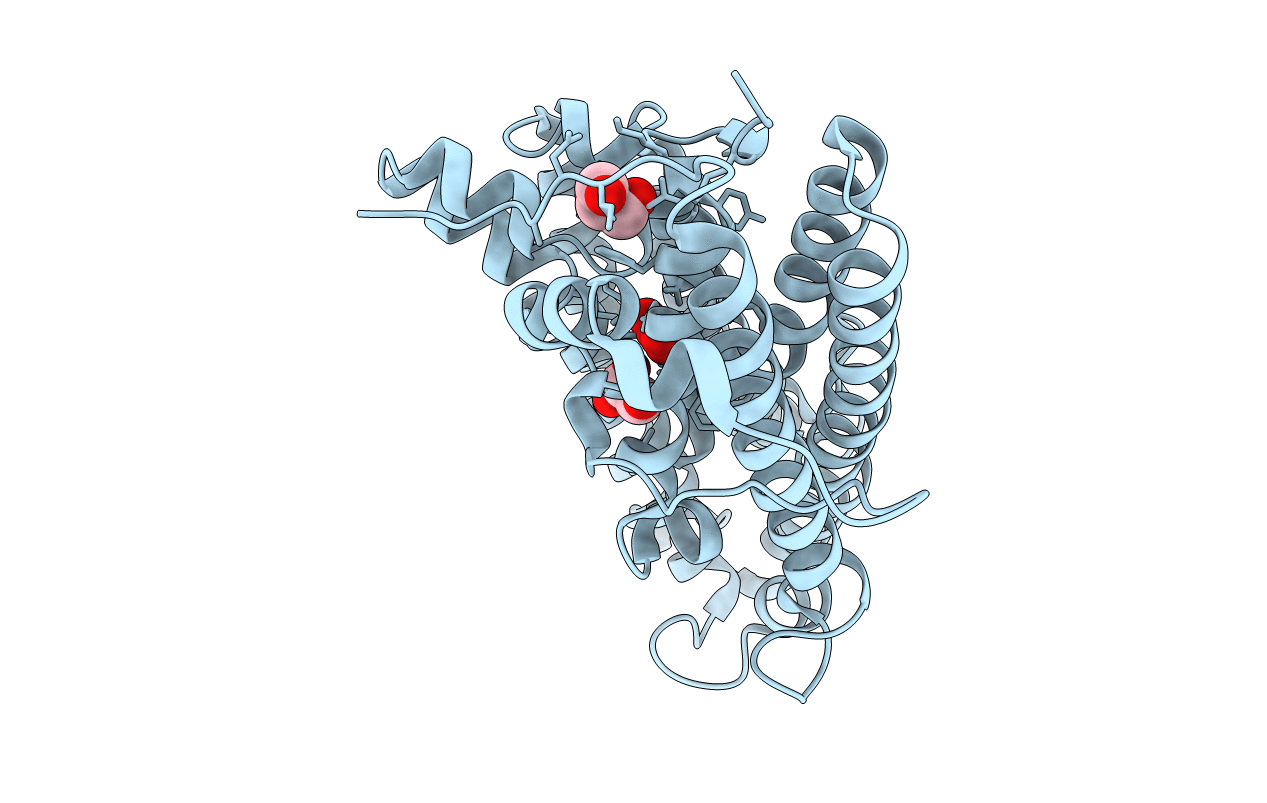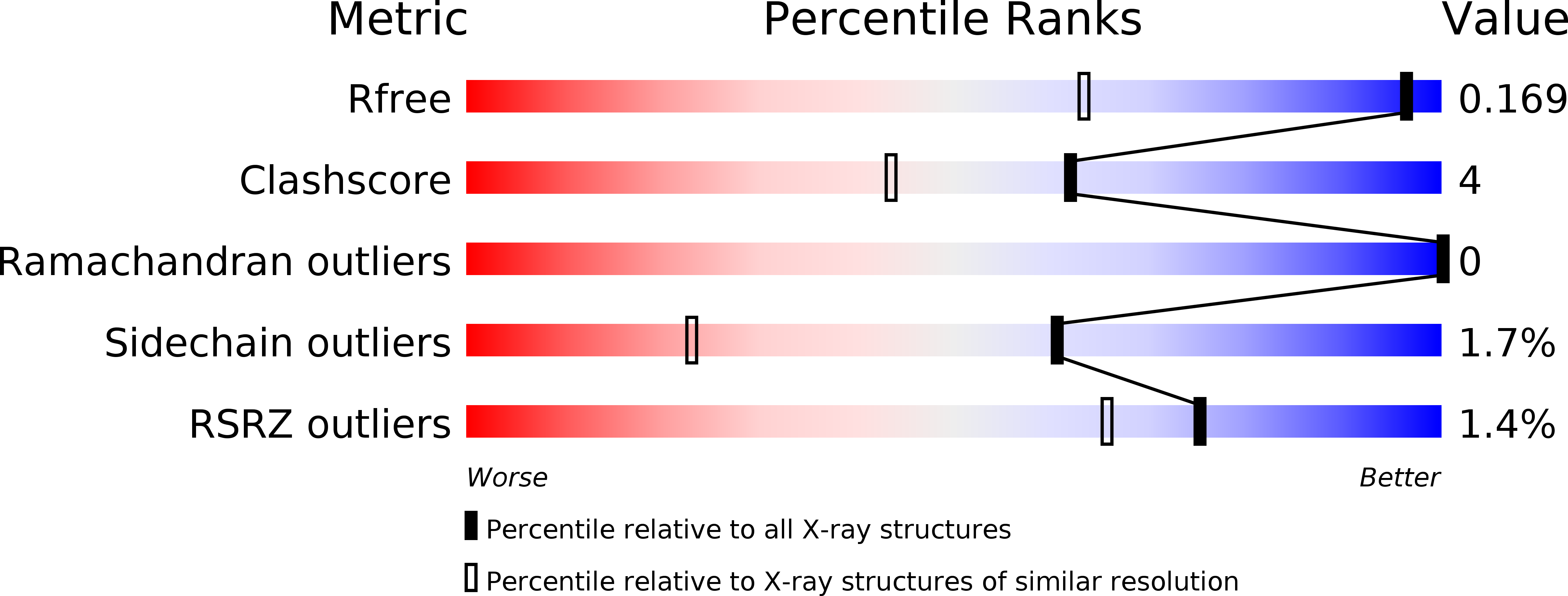
Deposition Date
2010-09-23
Release Date
2010-10-20
Last Version Date
2024-11-27
Entry Detail
PDB ID:
3OYV
Keywords:
Title:
Crystal structure of an imelysin peptidase (BACOVA_03801) from Bacteroides ovatus ATCC 8483 at 1.25 A resolution
Biological Source:
Source Organism:
Bacteroides ovatus ATCC 8483 (Taxon ID: 411476)
Host Organism:
Method Details:
Experimental Method:
Resolution:
1.25 Å
R-Value Free:
0.16
R-Value Work:
0.13
R-Value Observed:
0.13
Space Group:
C 1 2 1


